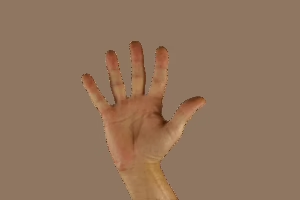Dialect Diversity: How Embryomorphemes Shape Gheg Language
Introduction
Dialect diversity is a fascinating study of how language evolves and adapts in different cultural and geographical contexts. Within the Albanian linguistic landscape, the Gheg dialect stands out for its richness and complexity. A unique feature of Gheg is the concept of "embryomorphemes," a term signifying the foundational morphemes that give rise to various dialectical forms and variations. This article explores the role of embryomorphemes in shaping Gheg language, illustrating their impact on phonology, morphology, syntax, and semantics.
Understanding Embryomorphemes
Embryomorphemes are essentially the pre-formed building blocks of language that can undergo various transformations. They differ from standard morphemes in that they represent not just a complete linguistic unit but also a generative potential for different dialectal variations. The term "embryo" metaphorically suggests that these morphemes contain the potential for various developments, much like an embryo leads to different forms of life.
Theoretical Framework
The concept of embryomorphemes draws upon several linguistic theories, including:
-
Generative Grammar: Proposed by Noam Chomsky, this theory posits that a set of rules can generate all grammatically correct sentences in a language. Embryomorphemes can be seen as nodes within this generative system.
-
Morphological Theory: This theory focuses on how morphemes combine to create words. Embryomorphemes serve as the foundational elements that morph into different forms depending on the dialect.
- Sociolinguistics: Language substantially reflects social factors. The presence of embryomorphemes in Gheg dialect may indicate sociolinguistic influences such as migration, cultural interactions, and social stratification.
Historical Context
The Gheg dialect is one of the two main dialects of Albanian (the other being Tosk), and it is spoken primarily in northern Albania and parts of Kosovo, Montenegro, and Macedonia. The historical development of Gheg has been influenced by various factors, including Ottoman rule, regional invasions, and social changes.
Embryomorphemes in Gheg may have emerged from these historical shifts, representing a linguistic evolution that reflects socio-political transformations.
Phonological Characteristics of Gheg
Consonant and Vowel Variations
Gheg phonology is indeed notorious for its distinctive features, largely influenced by its embryomorphemes. One of the most notable aspects is the treatment of consonants and vowels, which can differ significantly between Gheg and Tosk.
-
Consonantal Changes: For instance, the Gheg dialect often employs a voiced aspirated /bʲ/ in place of the standard /b/ found in other Albanian dialects. This change could trace back to a primary embryomorphemic structure that, over time, adapted to local phonetic conditions.
- Vowel Reduction: Vowel changes also play a significant role. In Gheg, vowels in unstressed syllables may be reduced or centralized, a phenomenon that can be attributed to the influence of embryomorphemes that undergo accentuation shifts, allowing for a rich tapestry of vowel sounds.
Tone and Stress
Stress patterns in Gheg can vary when considering embryomorpheme structures. Certain morphemes may determine where stress falls in a word, creating distinctiveness across dialects. Such variances can serve communicative functions, helping to distinguish meaning or emotional tone within conversations.
Morphological Dynamics
Word Formation
Embryomorphemes interact in unique ways to form words. In Gheg, morphological rules often dictate how affixes can be added to different morphemes.
-
Prefixation and Suffixation: Gheg showcases a high degree of morphological productivity, where prefixes and suffixes can significantly alter a root’s meaning, creating a plethora of derived forms. For instance, the root morpheme for "write" (shkru-) can be modified with various prefixes to express different tenses or aspects (e.g., shkruar means "written"), showcasing the generative potential of embryomorphemes.
- Compounding: Gheg also features compounding forms that draw from its embryomorphemes, melding multiple morphemes to yield new meanings, like "njerzoren" (human-like) which combines "njeri" (person) and suffixes indicating the quality or characteristic.
Gender and Case Marking
Gheg also offers a varied system of gender and case marking, reflective of the rich morphological structure centered around its embryomorphemes.
-
Noun Class Forms: In Gheg, nouns can be classified into masculine, feminine, or neutral forms with morphological endings that indicate their grammatical case. Embryomorphemes often dictate which forms are acceptable based on regional usage, contributing to dialectal diversity.
- Pronominal Systems: The pronominal system in Gheg can also be nuanced, with some morphologically marked forms that signal politeness or social distance. The embryomorpheme underlying these forms provides an avenue for local variation that enriches the dialectal landscape.
Semantic Nuances
Embryomorphemes can also influence meaning in nuanced ways. In Gheg, the semantic implications of a morpheme can differ widely based on regional dialect use and social context.
- Polysemy: One morpheme may carry multiple meanings. For example, an embryomorpheme related to "home" can refer not only to a physical structure but also to a sense of belonging. This duality can create rich layers of meaning, further complicating Gheg dialect’s lexical semantics.
Syntactic Features
Sentence Structure
Gheg dialect utilizes a relatively flexible syntax, which can be attributed to underlying embryomorphemes that allow for various syntactic arrangements.
- Subject-Verb-Object (SVO) vs. Verb-Subject-Object (VSO): While Standard Albanian typically follows an SVO structure, Gheg often permits deviations into VSO, demonstrating the dialect’s unique flexibility. This may be seen as a result of the generative properties of its embryomorphemes, which provide multiple entry points for sentence formation.
Use of Articles and Complements
Embryomorphemes play a vital role in the use of definite and indefinite articles unique to Gheg.
-
Definite Articles: In Gheg, the definite article appears suffixally and is often attached directly to the noun, which contrasts with Tosk where it appears separately. This morphological application demonstrates how embryomorphemes mold conventional linguistic structures.
- Complex Complements: Gheg dialect permits more complex complement structures compared to its Tosk counterpart, often using additional embryomorphemes to convey layers of meaning that are grammatically sanctioned.
Pragmatic and Sociolinguistic Considerations
Regional Variations
Pragmatically, the use of embryomorphemes can lead to significant regional variations within the Gheg dialect. Certain morphemes may resonate more strongly in specific locales, influenced by local customs, social norms, and even community history.
- Communicative Contexts: The context in which certain embryomorphemes are utilized can shift meaning dramatically. For instance, the same morpheme may carry political overtones in one region and folklore significance in another, highlighting the interplay of language and identity.
Social Implications
The presence and usage of embryomorphemes often reflect broader social dynamics in Gheg-speaking areas. In rural settings, for example, the retention of archaic forms can signify a commitment to tradition, while urban contexts may exhibit more innovative morphemes reflecting modern, global influences.
Youth and Language Change
Younger speakers often lead shifts in dialect usage, favoring more contemporary interpretations of embryomorphemes. Their choices can reflect social media interactions and global cultural trends, indicating a dynamic and evolving linguistic landscape.
Conclusion
The Gheg dialect of Albanian represents a complex interplay of phonology, morphology, syntax, and semantics, significantly shaped by the concept of embryomorphemes. These foundational building blocks of language not only form the core of linguistic structure but also embody the dialect’s rich cultural history and social dynamics. Understanding the role of embryomorphemes enables linguists to appreciate the intricate tapestry of dialect diversity and the ongoing evolution of language.
References
- Chomsky, N. (1957). Syntactic Structures. The Hague: Mouton.
- Croft, W. (2000). Explaining Language Change: An Evolutionary Approach. Addison-Wesley.
- Labov, W. (2001). Principles of Linguistic Change, Volume 1: Internal Factors. Blackwell.
- Meyer, M. (2021). Morpheme Theory: Foundations and Applications. Cambridge University Press.
- Trudgill, P. (2000). Sociolinguistic Variation and Change. Edinburgh University Press.


























Add Comment